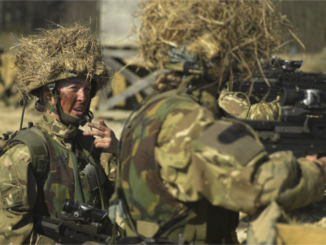
Power station, Andrew Hill – Licence CC BY-SA 2.0
Part one went through the first two years of my drawing office apprenticeship with Babcock and Wilcox Ltd. During the second year, Babcock and Wilcox Ltd became Babcock and Wilcox (Operations) Limited. The first of many name changes during the 35 years I worked for them so for simplicity I will call them Babcock.
In September 1968 I started the third year of my apprenticeship. The remaining 24 of us were given a choice, we could either go to the main works in Renfrew, on the outskirts of Glasgow, for two years or we could go to Edwin Danks industrial boiler plant in Oldbury for the first year followed by a year on a construction site. I had made my mind up when I had been interviewed for the job two years earlier, I wanted to experience a major construction site so my choice was simple. Sixteen of us choose Renfrew and the rest of us chose Danks.
One of the other lads who lived near me in North London had an old convertible Morris Minor so we set off for our digs in Litchfield. The company had bought a huge house called Aldershawe Hall on the road from Litchfield to Wall (I remember a terrific pub there, anyone know Wall?). The house and gardens were huge with three fishing lakes in the grounds and even a snooker room. The house had been converted into a hostel and was to house the eight of us third-year apprentices and around 20 first year Construction Division apprentices. The ten bedrooms were divided up we had two, a six-bed room and a two-bed room. A coach was laid on every morning to take us first to Tipton where the Construction Division school was based and then on to Danks in Oldbury. The idea was that six of us would be rotated around various departments of Danks spending one month in each department and the other two would spend two months at the Babcock Welding School at Tipton.
My first month was in the plating shop. Danks made cylindrical industrial fire tube boilers and the sizes varied considerably some were pretty small but others were quite big. The boilers all had cylindrical bodies like a barrel but much bigger. The steel was delivered as flat plates. It was the task of the plating shop to mark out the flat plates and cut them to the right size for rolling into a cylinder. From there I spent time in assembly, inspection, testing, tubing, combustion, site installation and the forge/press shop. In between, I spent two months at the welding school.
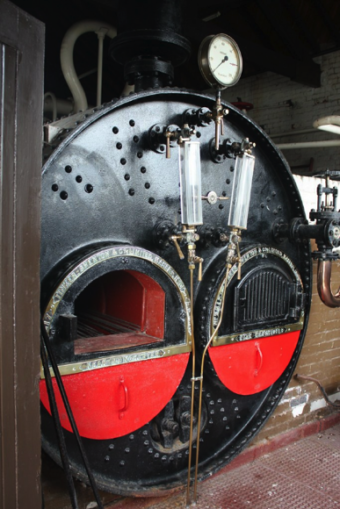
img_8243, Richard Ash – Licence CC BY-SA 2.0
Like most experiences, certain things stick in the mind from my time at Danks. As I write about this I can taste the delicious sandwiches served in the canteen every morning at the breakfast break. The fillings were any combination of fried egg, bacon or sausage all served with a dipped slice. The factory cat that got squashed when a huge plate was dropped by an overhead crane. The guys in the press shop always playing practical jokes on one another, like drilling a hole in someone’s tea mug and filling it with soap so that it melted when filled with hot tea. They also nailed one of their number’s boots to the wooden podium in the press shop. Then there was the bloke who did X-ray inspection of welds who had a kip in the dark room every afternoon.
I spent my two months at the welding school with my pal from North London. It was one of the most enjoyable times I spent during my apprenticeship. The first three weeks we were gas welding plates and pipes. These were normally done with a backing plate and if I remember rightly were up to 1/4” thick. We both got burnt noses during this period and we were then issued with protective leather welders jackets, chaps and nose guards! At the end of the three weeks, we both did a test piece in the same way that one of the professional welders would the 3” diameter pipe was tested ultrasonically, X-rayed and finally the examiner marked a section to cut out for mechanical testing. We both passed.
Next, we moved on to a three-week arc welding course. One of the challenges here was the increased thickness, up to 3/8” and more exotic materials. Because of the high temperatures and pressures involved in steam raising plant some very fancy steel is often used, consequently welding rods have to match the steel and Babcock made their own rods so we were taught what rods went with what material. The three weeks worked in a similar way to the gas course, butt welds followed by pipe welds followed by the same tests as the gas welds. Once again we both passed.
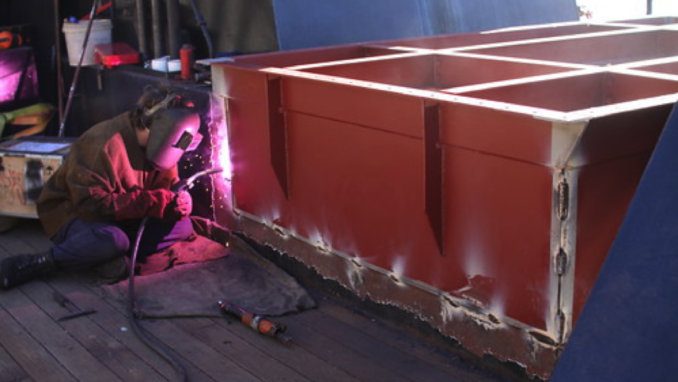
Weld, Wieste? – Licence CC BY-SA 2.0
The final fortnight was argon arc welding. At that time argon arc was normally used for root welds on very large pipes thick pipes and then the infill was done by electric arc. We only did the root weld training as on-site, the welders doing the infill on large thick pipes were specially trained and worked in pairs opposite each other to keep the stress low. Again we both passed. Because we weren’t going to be working as site welders we didn’t get certificated but the instructors told us that if we ever wanted to take up welding as a profession they would be delighted to give us a refresher course and we should easily get the qualifications.
While we were on this course my pal told me he had had some money stolen from his bedroom in Aldershawe Hall. He said he knew it was not me because we had been at work together when it happened. Our best guess was it was one of four people who had stayed off work sick on the day it happened. Of course, it could have been one of the staff but they were three cooks, the hostel manager and his wife and the groundsman and had all worked for the YMCA, who ran the hostel for Babcock and had been employed for years. We talked it over and decided to bring in the manager. He was disgusted and sad my pal should do to the police. To cut the story short they set a trap with ten shilling notes covered in ultraviolet fluorescent powder. A week or so later my pal rushed into my room and said one note had gone while we had been at work. We worked out that one of the four had been off again that day. The police had to do things by the rule and of course, only one person’s hand fluoresced. He was arrested, charged and suspended from work awaiting the court case. The eight were down to seven.

Bank of England, Leo Reynolds – Licence CC BY-SA 2.0
Shortly after the theft, we lost two more of our number and for similar reasons. Only living in Litchfield it was easy to go back to London every weekend and two of the guy had now got serious girlfriends. First John put in this notice and went back to live in London where he had got a job driving a van for Marley Tiles. Then a couple of weeks later Michael was gone he was moving in with his girlfriend and got a job as a gravedigger! As one of our group said it was a trade that was never going to die out.
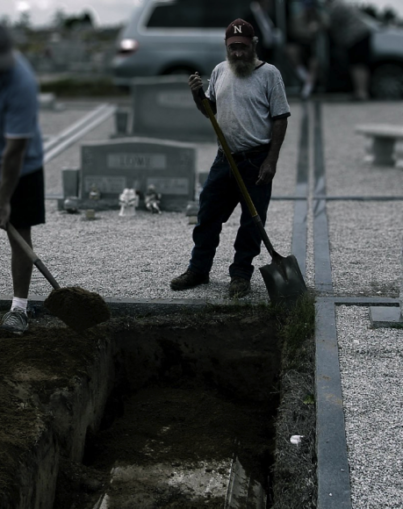
Gravedigger, Hans Watson – Licence CC BY-SA 2.0
About this time we were joined in the hostel by two newcomers who had been employed to train as ultrasonic welding inspectors for the construction division. My pal and I became quite friendly with one of them and we were invited to his wedding in Glasgow in September.
During our time in Litchfield we were signed up for day release at a technical college in the middle of Walsall. I was fairly happy that I was going to pass the end of year exam, especially the technical drawing element. On the morning of our final exam, the lecturer had us working through old exam papers. I can’t remember what the subject was but I distinctly remember reading a question on a subject we had never been taught. So we asked the lecturer, he said it wasn’t on the curriculum that the college had given him but on checking it was a mistake and we should have been taught it. So he gave us a quick lesson and took us through the question step by step. That afternoon we sat down to the external paper and the very first question was exactly the same as the morning’s old question. Everyone in the class leapt on the question and it was a guaranteed 20% of the marks all around.
After the exams, at the end of May, we went back to London. While we had been away the company had moved offices, leaving the Euston offices that were rented and moving into the building in the Borough that had housed the Dewrance Valves factory. Dewrance had relocated to Skelmersdale and as Babcock owned the building it made sense to turn it into offices. I was sent to work in the Project Drawing Office. Strangely it was in exactly the same position as the lathes I had been working with when I first started work. I soon discovered that the tender drawings produced in the Project DO were very different from the contract drawing. While being to scale and accurate the drawings had to look good. When tendering for important contracts in those days we even produced a full set of drawings that were printed on cartridge paper and shaded in using watercolours. There were four sections in the PDO, three that handled power station and industrial boiler tenders and one that did marine tenders.
In those few summer months in the Project DO I learnt a lot and was able able to utilise much of what I had seen in the factory and learnt at college. I also got to know the staff and really enjoyed myself. During that time we learnt where and when the remaining five of us were to go that September. One to Dounreay nuclear PS in Scotland, one to Ratcliffe PS near Nottingham, one to Didcot near Reading and my pal and I were sent to Ballylumford near Larne in Northern Ireland. We told we would have to go by sleeper train to Stranraer and ferry to Larne. My pal was anxious to take his little Morris Minor so we asked if we could have the cash instead of being issued tickets and that was agreed. It so happens that we were due to report on-site at eight on a Monday morning and the Glasgow wedding we had been invited to was on Saturday before. So we drove to Glasgow on the Friday, went to the wedding on the Saturday, got the Stranraer to Larne Ferry on the Sunday and checked into one of Larne’s two hotels on Sunday afternoon.
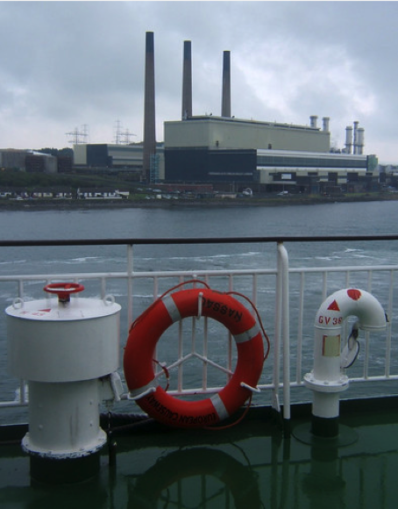
Power station, Andrew Hill – Licence CC BY-SA 2.0
The company told us we could stay in the hotel on expenses for a week but after that, we were on a weekly allowance and we would have to find digs for that amount. After breakfast on Monday, we set off for the power station. To get there we had to get a small ferry from Larne Harbour, across the entrance to Larne Lough to Ballylumford village from where the site was a few minutes walk. We had been warned the ferry was a bit basic. Well, they weren’t kidding, it was an old open lifeboat and there was quite a queue. The fare was six old pence return a day or two shillings for a weeks season ticket. It made no difference to us as we were only travelling four days a week as we were to attend Larne Technical College for our day release.
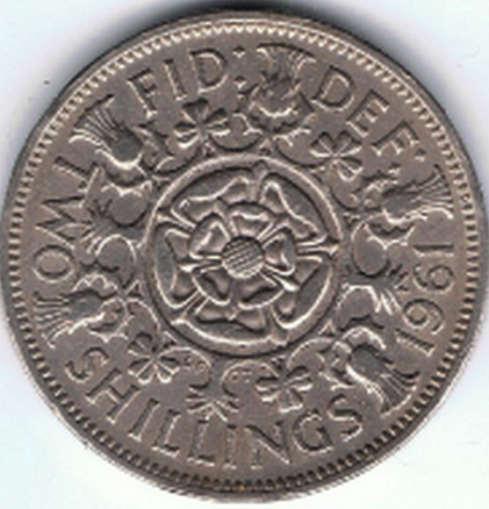
Two shillings (British coin), Nicholas Gemini – Licence CC BY-SA 3.0
Arriving at the site gate an armed security guard from the Northern Irish Power Authorities (EPNI) was demanding everyone’s passes and of course we didn’t have one. We explained who we were and the Babcock site manager turned up and vouched for us, took us to the site office and set about getting us passes so that we could move about the site. This was around about the start of the “Troubles” and people were beginning to get highly security-sensitive. Once we had our passes we were issued with what is now know as site PPE. Steel toe cap boots, white hard hats and white overalls. The hard hat colour indicated status inside the Babcock site system. Blue was worker, white supervisor, yellow commissioning engineer, green first aider and red site manager. I believe that there is now a nationwide construction site standard but I have no idea what it is. The white overalls were reserved for management, workers got navy blue so we were immediately in a privileged position. The site manager designated one of the site engineers to show us around and off we went.
Ballylumford ‘B’ consisted of 3 x 120 Mw Oil fired units and we were just finishing construction of No 3. 1 & 2 were in full working order. The ‘C’ Station 3 x 200 Mw oil-fired units, was just starting. The foundations for the C Station were complete, the support steel for No 4 was up and No 5 was just starting. The storage yards were filling up with bits from Renfrew to erect for No 4 and second of three chimneys was half up but there was a problem with it we were told. The old storage tanks for the first three units were finished and the first for the C Station was nearly finished and more were going up. Finally the most important place, the site canteen, and highly subsidised food and drink.
Back to the site offices, a long thin wooden building shaped in a tee with the site manager and his secretary in the short bar across the top and offices for supervising engineers either side of the long leg with a corridor down the middle. After lunch in the canteen, it’s down to the site with one of the section engineers and inside boiler No 3 see some reheater tubes being set in position, welded up and tested. Then back to the office to start looking for digs. We found a place and booked in from the next Sunday, well if we were going to be paid expenses for a week in a decent hotel why move into cruddy digs too soon. All the digs knew how much the travelling men on the site got a week for bed, breakfast and evening meal and that’s exactly what they all charged. On the ferry on the way home, people rushed to sit a the front of the boat. It soon became clear why. Any leftover sandwiches were thrown up in the air to the wheeling seagulls who have an annoying habit of opening their bowels as soon as they eat, all over anyone in the back of the boat.
After a week in the digs, we decided they weren’t for us and started to look for somewhere different. As you know Northern Ireland is split on sectarian grounds and we had landed up in a place owned by Protestant extremists. They were always quoting the bible, had religious pictures everywhere, demanded to know why we didn’t go to church on Sunday and were continuously moaning about Catholics. In the end, we got some lovely digs living in the home of a recently widowed nurse and her grammar school son and were quite happy to pay out our full allowance.
One evening we walked out of the site office and had just got to the site gate when there was a huge crash behind us. Turning round we saw a crawler crane had toppled over and the jab had landed on the roof of our site-building. It had landed directly above the central corridor and had only not crushed the entire building because it was stopped by the cold water tank which was supported across the two walls of the corridor. The crane had been working on one of the oil storage tanks and had put its outrigger down on soft soil, swung around and overbalanced.
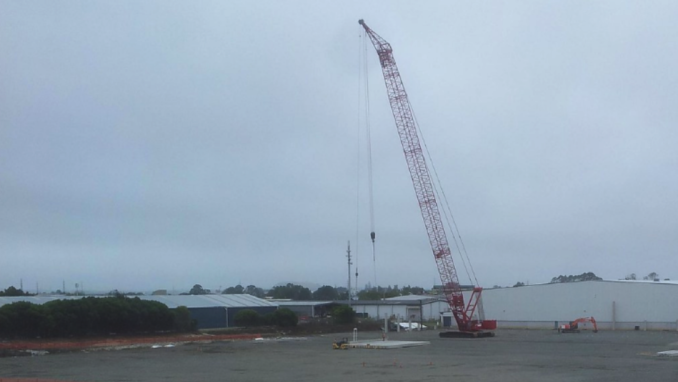
Splitter Damper Bracket Assembly, snof_gorf – Licence CC BY-SA 2.0
That wasn’t the only accident that occurred while I was on site. A man working on the oil jetty fell into Larne Lough and drowned. A steel erector, who was inside a structural column, waiting to splice the next section to it stuck his head out and got it crushed by the next section. Finally, a supervisor rigger had loaded a trailer, in one of the storage yards, with pipework. As the trailer was starting to move away he saw it was unstable and stopped it. He then climbed on the load to tie it down and toppled it over crushing him. Construction sites are dangerous places.
One silly thing we found was that every six weeks the travelling workers on site, that is anyone who wasn’t local was paid to travel home for a long weekend. Work on site stopped on a Thursday afternoon and restarted on a Tuesday lunchtime as London Office apprentices we were only entitled to paid trips home at Christmas, Easter and Whitsun. When the site manager found out about this he organised for us to be paid overtime for those three days the site was closed. Strangely this allowed us to purchase standby young person air tickets to fly from Belfast to London on a Thursday late evening and back late on a Monday evening and still be in pocket as the fare was so cheap.
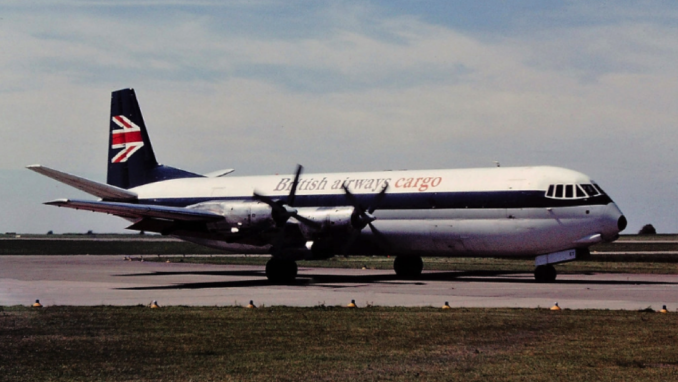
G-APET Vanguard BA EMA 06-06-76, Rob Hodgkins – Licence CC BY-SA 2.0
Larne was a bit of a one-horse town and distinctly Protestant but with a few “Finean” streets. You could always tell which by the prominence of Union Flag, Red Hand of Ulster flags or Republic tricolours. In those days living in Northern Ireland was very different to living in London (or even Litchfield!). One of the first things I noticed was that the green uniformed police were all armed. On Sundays, almost everything (expect churches!) shut. The pubs were shut and the only place to get a drink was a hotel, you were supposed to be a resident, but it was often ignored. On Sunday afternoons the younger people used to congregate in the towns two coffee bars (yes they still had coffee bars!). Many of the working-age had been employed at what was know by all as “The AEI”. It was, in fact, a steam turbine factory that had been part of GEC for many years. The highlight of every week was the Friday night dance that was held in “The AEI” canteen.
One evening my pal and I were walking home from having a few beers (we always drank in one of the hotels, the bars were pretty rough) when we spotted a rifle in the middle of the road. The Royal Ulster Constabulary station was just a few hundred yards down the road, so we debated picking it up and taking it there, ignoring it and heading for bed, or telling the RUC that it was there. In this day and age, it would have been a matter of getting on the mobile, but this was years before they were invented and the RUC were notoriously trigger happy. In the end, my pal stood by the gun and I ran down to the RUC station. Don’t think of it like a 1970 British police station with a Dixon of Dock Green blue lamp outside. This was what I can only describe as a blockhouse, complete with sandbags and firing slits. A huge solid front door was firmly shut with one of the old fashioned bell pulls next to it and a “Pull for Attention” notice next to it. I tugged on it and eventually a voice asked what I wanted. I explained and eventually I heard bolts being pulled and the door opened and a constable peeped through the door holding his service revolver. I pointed down the street to where my friend was standing by the gun and three constables rushed past me, grabbed the rifle and ran back inside. My friend and I were invited inside, given a cup of tea and told they were going to treat the gun as lost property and told us that if it wasn’t claimed in a year it would become ours! Needless to say, we never went back.
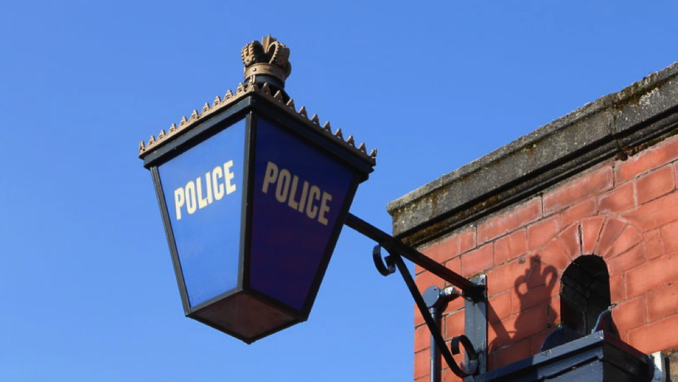
Blue lamp at Well Lane police station, Birkenhead, Rept0n1x – Licence CC BY-SA 3.0
In June 1970, while we were still in Northern Ireland, there was a general election and the DUP candidate for the area was Ian Paisley. The evening after the election I was in the technical college taking an exam when all hell broke out outside. Paisley was holding a victory meeting, with speeches over loudspeakers, bands, drummers and screaming crowds. It became almost impossible to concentrate on the exam. In the end, the examiner shouted to us to do the best we could and the college would write to the examining body explaining the circumstances. I managed to pass that exam, but I really don’t know how.
Shortly after that, we returned to the London office and I was once again sent to the Project Drawing Office. I was quite happy to be going to somewhere I was familiar with and doing work I enjoyed. On my first day back the chief project draughtsmen called me into his office for a chat. He explained that a list of the five people coming back from site had been circulated around the various departments and that going by the few months I had spent working for him the previous summer he had requested me as he knew I would be a useful member of the office from day one.
Over the year to the completion of my apprenticeship, I got involved with many interesting projects one of these was in Hong Kong. The office was throwing every resource and effort at winning a contract for an oil-fired power station for Hong Kong Electric on Hong Kong Island. The staff from three sections of the Project Drawing Office were all beavering away on it. I got called into the chief draughtsman’s office and he was sat with Dave, one of the boiler design engineers. Dave had a design for a 350 Mw coal-fired boiler he needed drawing so that it could be costed and the chief draughtsmen had reluctantly agreed to pull me off the other project to draw a longitudinal section through the boiler. I produced it, not know where it was for only that the job’s project number and it’s title – CLAP.
Fast forward a month, we were just finishing up the Hong Kong Electric bid and Dave was back. The client liked the design and the price was right, could I produce a quick plant layout drawing showing four boilers. Our client was GEC in Manchester who would be handling the electrical and turbine islands, we were to bid the boiler island to them. The ultimate buyer was China Light and Power who were based in the New Territories of Hong Kong. This was a rival to the Hong Kong Electric job and hush, hush. I got on and produced, even if I say it myself, a pretty neat and cost effective design.
Suddenly this project went mad. CL&P showed their hand with an application to reclaim land from the sea at Castle Peak for a power station, GEC were the only company talking to CL&P, we were the only boiler maker talking to GEC. This was going to be a massive order and it was all hands to the pump. Loads more drawings were produced, plans, elevations, sections, flow diagrams, valve diagrams, damper diagrams, sub-contractors chipped in with all sorts of bits and pieces including the coal handling plant (coal was to come from Australia) and we had to supply ship unloaders, which were a first for me, and miles of coal conveyors to a stacker/reclaimer. The Hong Kong Electric job was forgotten (I think it went to Hitachi and was cancelled after the first two units were finished).
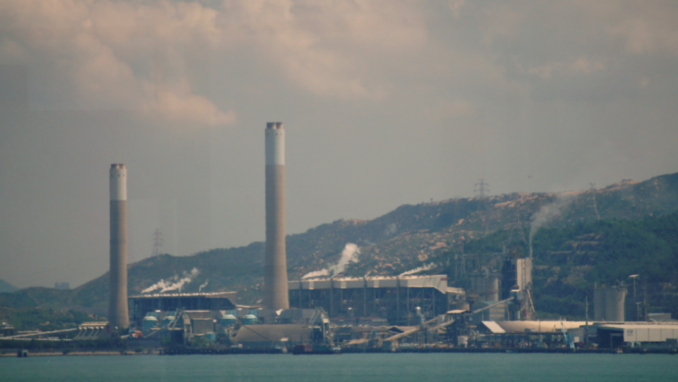
Castle Peak Power Station (Hong Kong), Malcolm Koo – Licence CC BY-SA 4.0
The day came when the order was placed and it was the biggest export order the company had ever got. It came at exactly the right time for the company, as the order book was looking a bit thin. Then CL&P decided to call the power station Castle Peak ‘A’ and immediately started talking to GEC and us about Castle Peak ‘B’ which was to be four more units but this time they were going to be 660Mw boilers. Dave, the estimator (another Dave), the salesman and I, as the original people on the project, were invited by the directors to a party at the Cafe Royal. As I was still an apprentice I would have preferred a cash bonus!
The length of a Babcock apprenticeship was based on five years less however long you had been at school after your 16th birthday. My birthday was in June and that meant that five weeks were knocked off my five years. Having started on the 26th September 1966 my apprenticeship was due to finish in the middle of August 1971. This time round I had spent over a year working in the Project DO. On the day I finished I was offered two full-time jobs in the company, working in the estimating department or staying where I was in the Project DO. I picked the drawing office and stayed with Babcock for 35 years, but that’s another story.
© WorthingGooner 2020
The Goodnight Vienna Audio file
Audio Player

